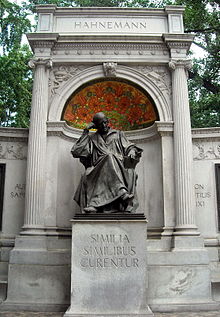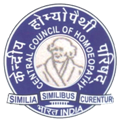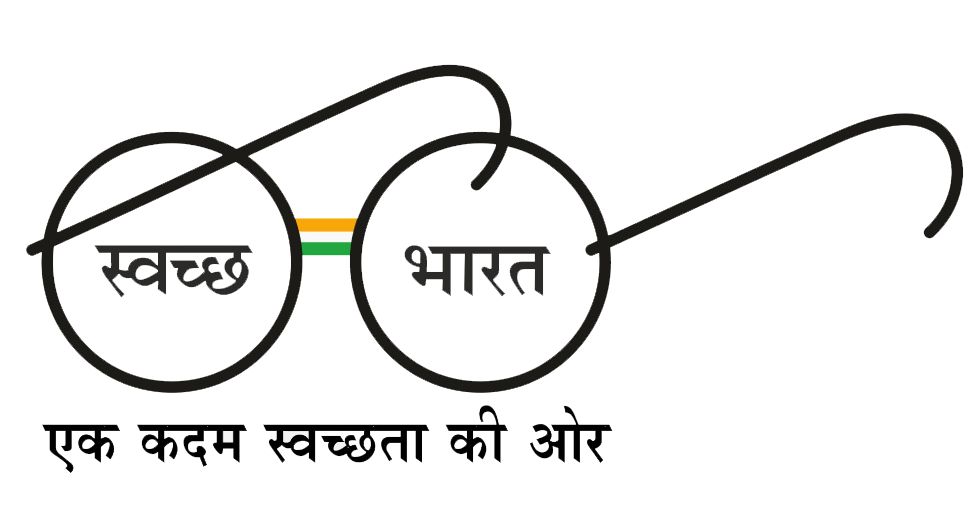
Homoeopathy - An approach towards legal acceptance
"In the treasury of nature, there are many Gems; those only are worth carrying away,which we know how to set"
-Honigberger
The history of Homoeopathy in India is linked with the name of Dr. Honigberger, a French man who brought homoeopathy to India. He was attached to the Court of Maharaja Ranjit Singh. He arrived at Lahore in 1829-1830 and was later invited to treat Maharaja Ranjit Singh of Punjab, who happened to be seriously ill of paralysis of vocal cord with swelling of feet and native physicians were unable to improve his health in 1839. Dr. Honigberger later on went to Calcutta and started practice there, where he was chiefly known as the 'Cholera Doctor'
This therapeutic system came to be practiced in India during the life time of Dr. Hahnemann, the father of Homoeopathy, when a German Physician and Geologist came to India round about 1810 for geological investigations and remained for some time in Bengal where he distributed homoeopathic medicine to the people
Dr. Mahendra Lal Sircar, was the first qualified physician in India who was inspired by the favour of lay-homoeopath Babu Rajen Datta, who himself practiced homoeopathy and treated successfully many patients, some of whom were distinguished men of the time such as Pandit Iswar Chandra Vidyasagar, Raja Radha Kanta Deb Bahadur. Later Dr. Mahendra Lal Sircar was instrumental in spreading the prestige and fame of homoeopathy far and wide in India. Ultimately more and more people started taking homoeopathic treatment for various diseases.
Legislative SupportBecause of its popularity, there had been demand for a long time for recognition of Homoeopathy as a system of Medicine by the Government of India. In April, 1937 Md. Ghias-ud-idin, M.L.A., moved a resolution in the Legislative Assembly for the recognition of Homoeopathy. The resolution was passed and forwarded to the State Governments for its implementation and Bengal was the first province to constitute a Homeopathic State Faculty in 1943.
After the formation of National Government on 17th February, 1948 Shri Satis Chandra Samanta, M.P. (West Bengal) moved a resolution for consideration by the constituent-Asssemby of India which run as follows -
"This Assembly is of opinion that homoeopathic system of treatment be recognized by the Indian Union and that a General Council and a State Faculty of Homoeopathic Medicine be established at once."
In moving his resolution Shri Samanta advanced the following arguments in support of his resolution namely -
- The system of medicine known as homoeopathy had been recognized by countries like Germany, France, England and America and also by certain Provinces and States in India, such as Bengal, the United Provinces and others.
- The system had been found to be efficacious and treatment thereunder was very cheap. it was, therefore, ideal for adoption in a poor agricultural country like India.
- State recognition and control would ensure proper scientific training of those who might practise the system and put an end to quacks and quackery thereby remove risk to life of people treated thereunder.
An amended resolution was moved by Shri Mohan Lal Saxena, Member of Parliament (UP) in the following terms.
"In view of the fact that treatment by the system of Homoeopathy is restored to by many people, this Assembly is of the opinion that the Government should consider
- the making of arrangements for the teaching of Homoeopathy;
- 2.the advisability of having Post Graduate Courses of study; and
- 3.the advisability of regulating the profession and arranging for the registration of practitioners in order to raise and maintain uniformity of standards."
This resolution was unanimously adopted and subsequently the Government of India appointed a Homoeopathic Enquiry Committee in 1948, and Committee submitted a report in 1949. This Committee recommended that Central Council of Homoeopathic Medicine should be established. Besides, the provincial Homoeopathic Council should also be established.
Homoeopathic Advisory CommitteeIn 1952, Rajkumari Amrit Kaur, the then Union Health Minister appointed a Homoeopathic Ad-hoc Committee which functioned upto 1954. Later on the same Committee was designated as the Homoeopathic Advisory Committee with the Director General of Health Services as its Chairman. In 1956, this Advisory Committee was taken over by the Ministry of Health and Secretary in the Ministry of Health became its first Chairman. The Homoeopathic Advisory Committee recommended the appointment of an Honorary Homoeopathic Adviser in 1960 and Dr. K.G. Saxena was appointed first Honorary Homoeopathic Adviser to the Government of India in 1962. This Committee also recommended the constitution of a Central Council of Homoeopathy. A special panel of Planning Commission of Indian Systems of Medicine and Homoeopathy endorsed this recommendation in 1952, 1956 and 1966. The Central Council of Health comprising of the State Health Ministers recommended in 1965 that the Central Council of Indian Systems of Medicine may be set up as early as possible to lay down and regulate the standards of education, examination and practice in Ayurveda, Unani and Homoeopathy.
Towards A Separate CouncilVarious All India and State Homoeopathic Associations had also been supporting the formation of Central Council of Homoeopathy in various Congresses. The Central Council ofHealth, therefore, constituted a Sub-Committee in October, 1967 with Pandit Shiv Sharma the Chairman to look into the details of the proposed legislation.
Accordingly, the Bill for Indian Medicine and Homoeopathy Central Council was introduced in the Rajya Sabha on 17-12-1968
A joint Committee of Parliament considered the Bill. The exponents of Homoeopathy and also the experts of the three systems of Indian Medicine, viz., Ayurveda, Unani and Siddha represented before the committee that the basic concepts of Indian Medicine were different from the fundamentals of Homoeopathy and, therefore, a separate Council of Homoeopathy was needed. For the proper growth and development of all the four systems, the Committee recommended two separate independent Central Councils, one for all the three systems of Indian Medicine and the other for Homoeopathy. The Committee amended the Bill suitably so as to make provisions for a composite Central Council for the three Indian Systems deleting references to Homoeopathy. The Committee also recommended for preparation of a separate Bill for Homoeopathy and drafted a Bill on similar lines for introduction in Parliament.
Accordingly, The Homoeopathic Central Council Bill was drafted and was introduced in the Rajya Sabha on 3rd April, 1972. Shri Jagdish Prasad Mathur, Member of Parliament moved a motion in the Rajya Sabha for reference of the Bill to another Joint Committee of both the houses and adopted by the House on the same day which is resolved as under -
"That the Bill to provide for the constitution of a Central Council of Homoeopathy and for matters connected therewith be referred to a Joint Committee of the Houses consisting of 45 members; 15 members from this House namely:
- Sh. Sasankasekhar Sanyal
- Sh. Bhupinder Singh
- Sh. N.G. Goray
- Sh. K. Nagappa Alva
- Sh. Debiprasad Chattopadhyaya
- Sh. Sitaram Kesri
- Sh. Man Singh Varma
- Sh. T.K. Srinivasan
- Sh. K.C. Panda
- Sh. Manubhai Shah
- Sh. Sultan Singh
- Sh. N.P. Chaudhari
- Sh. T.G. Deshmukh
- Smt.SavitaBehen
- Smt. Purabi Mukhopadhyay
and 30 members from the Lok Sabha;
that in order to constitute a meeting of the Joint Committee the quorum shall be one-third of the total number of members of the Joint Committee;
that in other respects, the Rules of Procedure of this House relating to Select Committees shall apply with such variations and modifications as the Chairman may make;
that the Committee shall make a report to this House by the first day of the Eighty first Session; and
that this House recommends to the Lok Sabha that the Lok Sabha do join in the said Joint Committee and communicate to this House the names of member to be appointed by the Lok Sabha to the Joint Committee."
Subsequently following motion in Lok Sabha was passed :-
"That this House do concur in the recommendation of Rajya Sabha that the House do join in the Joint Committee of the Houses on the Bill to provide for the constitution of a Central Council of Homoeopathy and the maintenance of a Central Register of Homoeopathy and for matters connected therewith, made in the motion adopted by Rajya Sabha at its sitting held on the 3rd April, 1972 and communicated to this House on the 4th April, 1972 and to resolve that the following 30 Members of Lok Sabha be nominated to serve on the said Joint Committee, namely -
- Shri Ziaur Ansari
- Shri Vidya Dhar Bajpai
- Shri Kushok Bakula
- Shri Muhammed Khuda Bukhsh
- Shri BhaoosahaibDhamankar
- Shri HiralalDoda
- Shri NageshwarDwivedi
- Shri PampanGowda
- Shri MadhuryyaHaldar
- Shri ChiranjibJha
- Shri Popatlal M. Joshi
- Shri Ramachandran Kadannappalli
- Shri B.R. Kavade
- Shri T.S. Lakshmanan
- ShriMallikarjun
- ShriPrasannbhai Mehta
- Shri N. Sreekantan Nair
- Dr.LaxminarayanPandeya
- ShriJanakiballavPatnaik
- Shri S.L. Peje
- ShriMaulanaIshaqueSambhali
- Shri M. SatyanarayanRao
- ShriUmed Singh Rathia
- Shri K. Ramakrishna Reddy
- Dr. Sankata Prasad
- ShriAwdhesh Chandra Singh
- Shri Ram Deo Singh
- ShriRanaBahadur Singh
- Shri A.K. Kisku
Joint Committee comprising of 45 members of both the Houses worked under the Chairmanship of Smt.PurabiMukhopadhayay, Member of Parliament (West Bengal).
Dr. Jugal Kishore, Adviser in Homoeopathy, Shri P.V. Hariharasankaran, Deputy Secretary and Dr. D.P. Rastogi, Research Officer from Ministry of Health and Family Planning;Shri M.S. Panigrahi, Deputy Secretary, Shri M.K. Jain, Under Secretary for the Secretariat, ShriP.L. Gupta, Additional Legislative Counsel, Smt.V.S. Rama Devi, Deputy Legislative Counselwere actively associated with the said Joint Committee of Parliament.
To facilitate the Committee 5(five) different questionaries were issued to Private Homoeopathic Practitioners, Professional Associations, Homoeopathic Institutions, StateHomoeopathic Boards/Councils and the State Governments to elicit replies to the specific pointscontained in those questionaries.
100 of memorandum containing views, comments and suggestions and replies to questionaries from 248 individuals, professional associations, institutions, StateBoard/Councils and State Governments on various provisions of the Bill were received by theCommittee. The said Committee visited various Homoeopathic Medical Colleges in theCountry and heard the homoeopathic doctors, representatives of the concerned organisations.
On the 8th March, 1973 the Committee in its 26thMeeting considered the draft report andadopted the Bill with some amendment. In the preamble of the Bill following were included:-
“..a few States have constituted State Boards or Councils either by legislation or byexecutive orders, for the purpose of registration of practitioners in Homoeopathy as wellas recognition of medical qualifications in Homoeopathy. There is, however, no Centrallegislation for the regulation of practice or for minimum standards of training and conduct of examination in the system of medicine on all India basis. A StatutoryCentral Council on the lines of the Medical Council of India of the modern system ofmedicine is a prerequisite for the proper growth of development of Homoeopathy.
The main functions of the Central Council of Homoeopathy would be to evolve uniformstandards of education in Homoeopathy and the registration of practitioners ofHomoeopathy. The registration of practitioners on the Central Register of Homoeopathywill ensure that medicine is not practised by those who are not qualified in this system,and those who practise, observe a code of ethics in the profession.
The Bill is intended to achieve these objectives”.-(Gazette of India, 01-12-1971, Pt.-II, S.2, Ext., P.-837)
Thereafter the Homoeopathic Central Council Bill as recommended by the Joint Committee was passed by both the Houses of Parliament and was given assent to by thePresident of India on 17thDECEMBER, 1973; to be called as Homoeopathy Central Council Act, 1973.
Homoeopathy Central Council (Amendment) Ordinance, 2018 the Central Council of Homoeopathy (CCH) stands superseded by the Board of Governors w.e.f. 15.05.2018 vide Gazette Notification No. R-13040/61/2017-HD dated 18.05.2019 and dated 06.03.2019 respectively.
 Central Council Of Homoeopathy
Central Council Of Homoeopathy



